
Far, far away from the bright neon lights of Japan’s big cities, discover a simple and pure Japanese way of life in Akita, deep in Japan’s northern reaches...
A spacious prefecture in northern Japan, Akita’s chief attractions are its natural beauty - combining mountains, lakes and the sea - celebrated hot springs such as Nyuto Onsen, and the former castle town of Kakunodate, home to arguably Japan’s best-preserved samurai district and one of the best places in Japan to observe the pink blooms of cherry blossoms come the spring. (We feel like we must say that every time, but this time we really mean it!)
There are also plentiful opportunities for enjoying some of Japan’s biggest and best festivals in the form of the Akita Kanto Festival and the Yokote Igloo Festival, modern art housed in a building designed by renowned Japanese architect Tadao Ando, and of course numerous opportunities to get outside and explore Japan’s great outdoors - starting with UNESCO World Heritage site Shirakami Sanchi area, home to the last virgin beech forests of Japan.
So what are you waiting for? Strap on your walking shoes, take in a deep breath of pure, refreshing air, and admire the scenery as you explore Akita’s mountains, lakes and forests.
1. Cycle Around Lake Tazawa
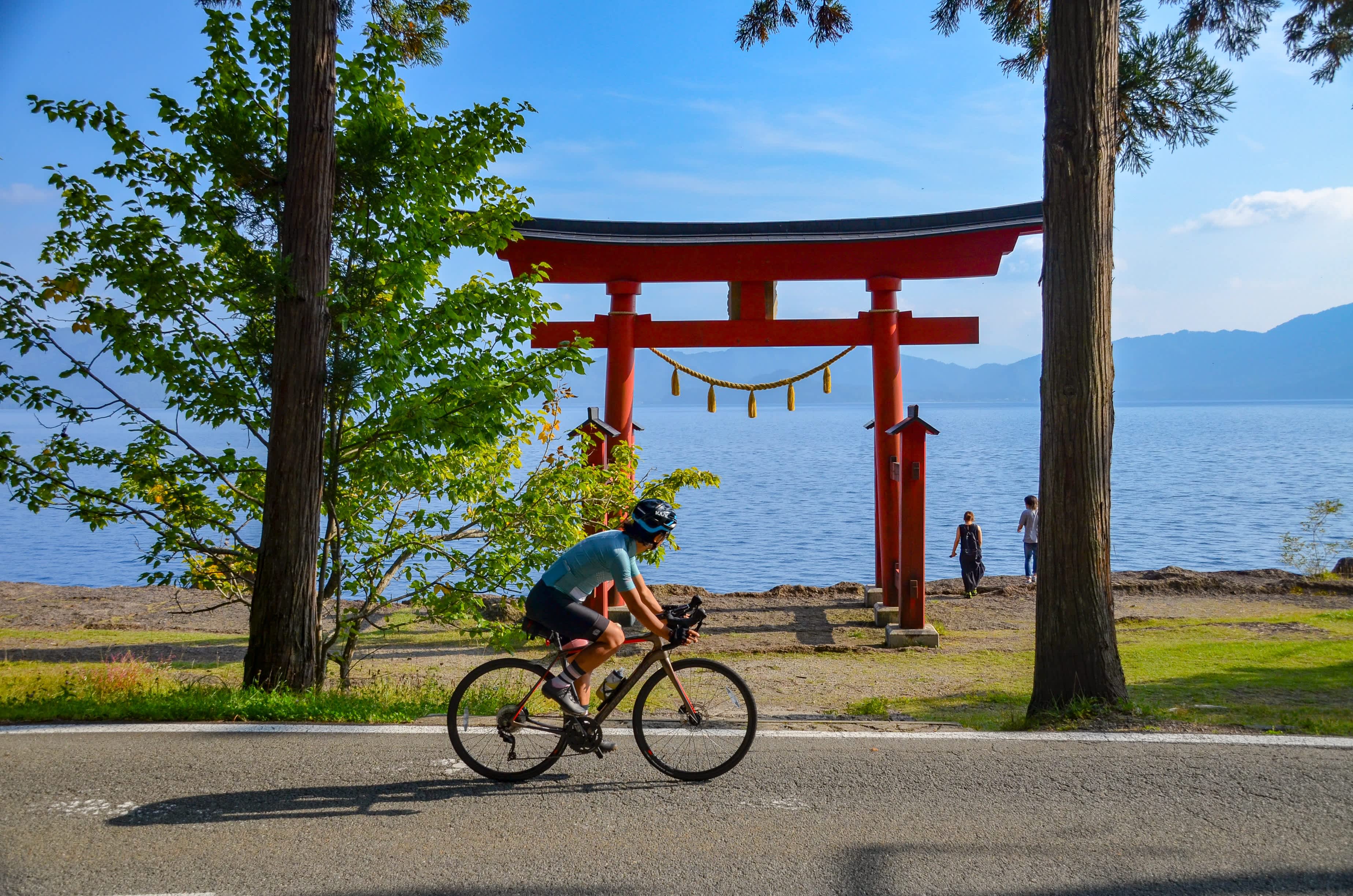
Lake Tazawa, a largely undeveloped picturesque caldera lake that is part of the Towada-Hachimantai National Park, is the deepest lake in Japan with a depth of 423 metres. Since you can’t swim to the bottom of it (at least, not without diving equipment!), why not take a scenic bicycle ride around it instead? At the lake’s eastern end you’ll find a rental bicycle shop, as well as a few restaurants, shops, and the sightseeing boat pier. Rent a bicycle and peddle around the lake’s roughly 20 km circumference, enjoying the dramatic scenery along the way.
While you’re there, make sure to drop by and say hello to the Tatsuko statue, a famous golden statue perched at the western end of the lake that has become something of a local symbol, a bit like Copenhagen’s Little Mermaid or Singapore’s Merlion. According to local legend, Tatsuko was a beautiful girl who prayed to retain her beauty, but was instead cursed and turned into a dragon who eventually sunk to the bottom of Lake Tazawa, to remain there forever.
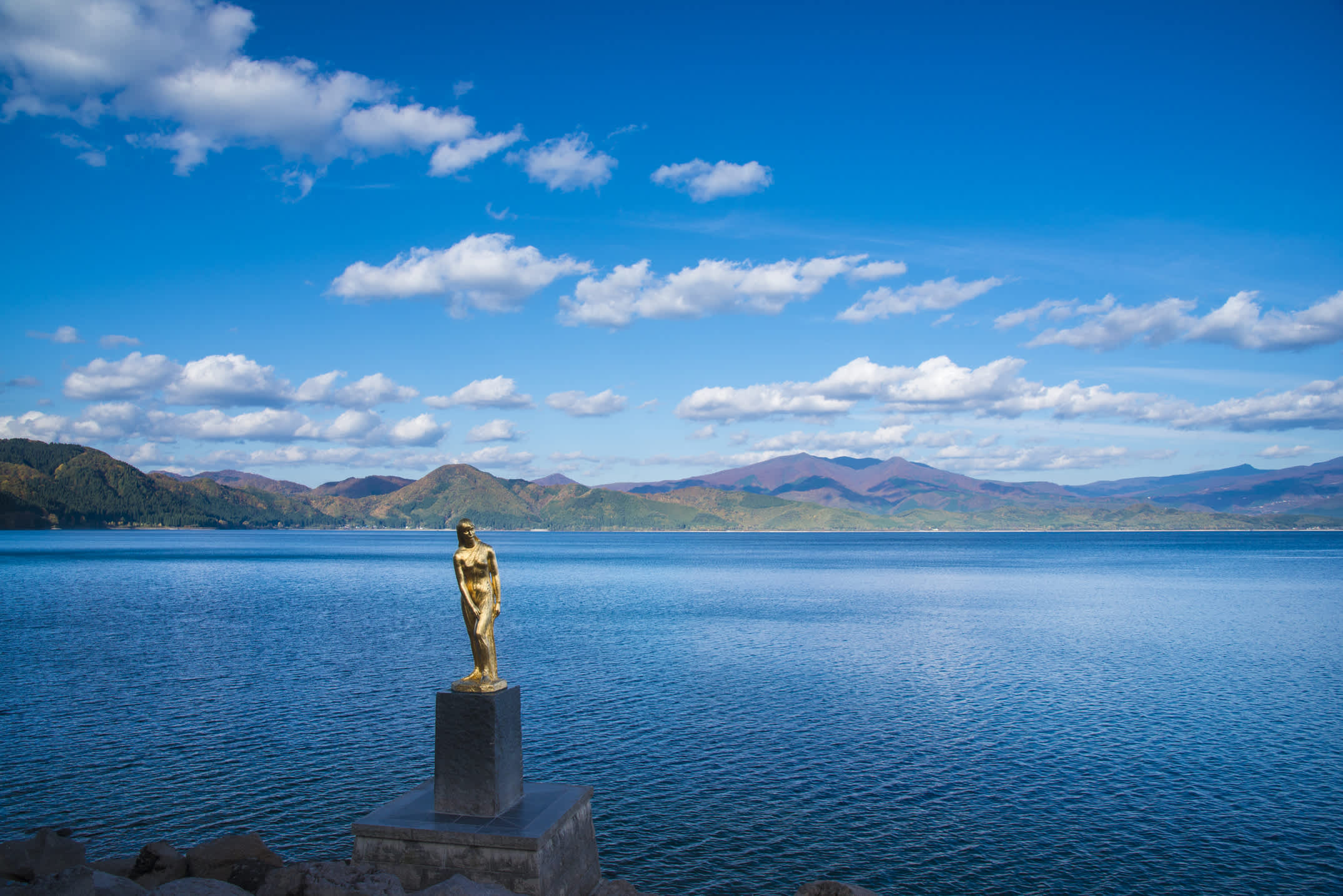
Another way to go and visit Tatsuko is to take the sightseeing boat from the pier at the eastern end of the lake. The boats operate almost all year round from late April to early November, making the round trip to Tatsuko’s statue in around 40 minutes and costing 1,220 yen / around £8. Alternatively, use the bus that circles round the lake and get off at bus stop “Katajiri”.
2. Bathe in Nyuto Onsen’s Milky Waters

Nyuto Onsen is known for the quality of the cloudy waters of the hot spring baths at its handful of inns. Gigglers alert - in Japanese, the name “nyuto” actually means “nipple”, however the origin of the name is said to come from the suggestive breast-like shape of nearby Mt Nyuto, rather than the admittedly milky appearance of the hot spring’s waters.

With a history stretching back over 300 years, it is Nyuto’s oldest and most famous inn - some of its rooms, equipped with traditional irori fireplaces, date back to the Edo Period (1603-1867). Daytrippers can sample Tsurunoyu’s waters from 10am - 3pm for the price of just 600 yen / around £4 (outdoor bath closed on Mondays). For a longer soak, book yourself in for an overnight stay, costing between 10,600 - 23,250 yen / around £60 - 135 (including two meals).
3. Take a Rickshaw Ride through Kakunodate Samurai District
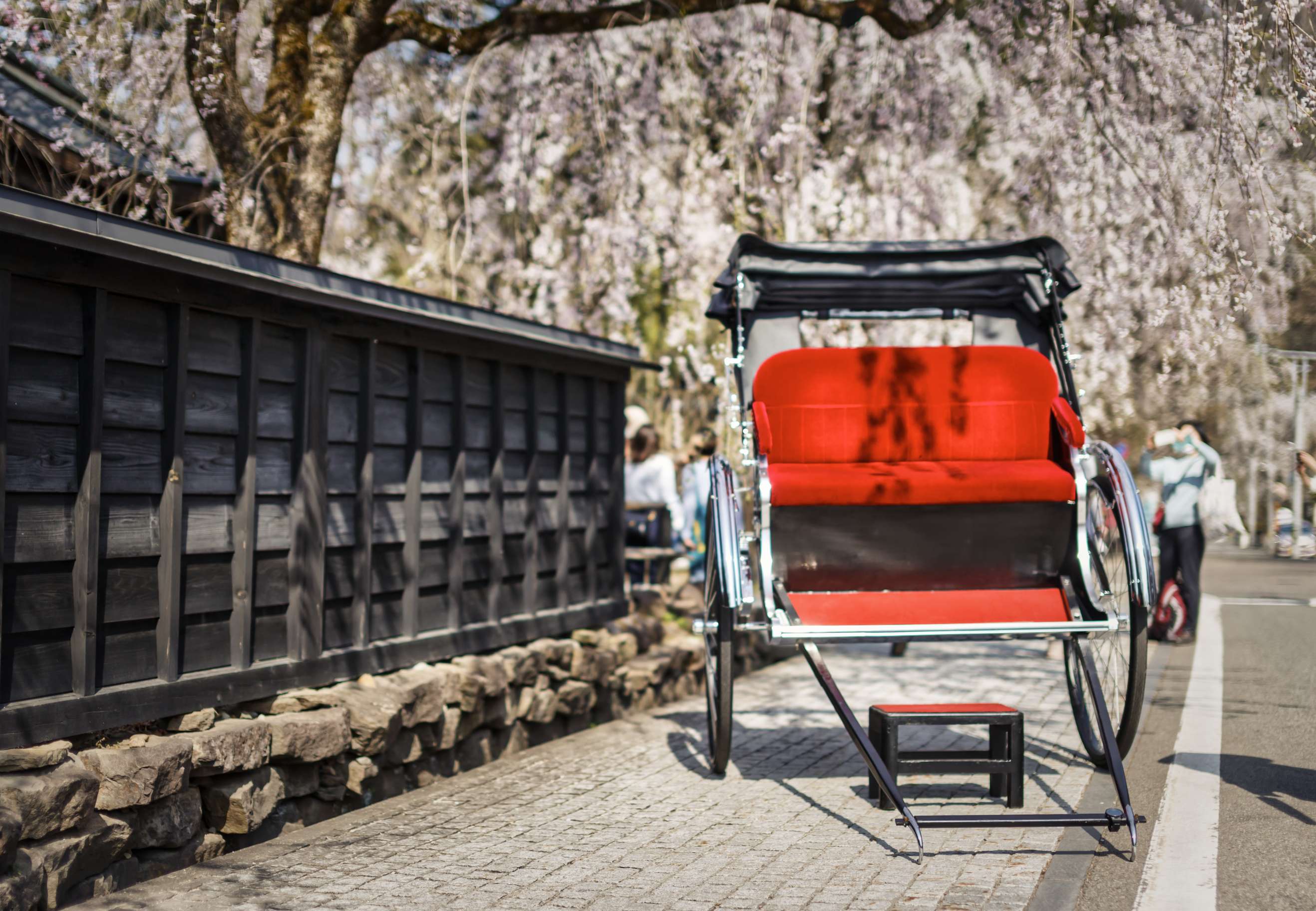
One of Akita’s top destinations, Kakunodate is a former castle town and samurai stronghold. Sadly, the town has lost its castle, but apart from that it has managed to remain remarkably unchanged since its founding back in the early 1600s. Today, the samurai tradition is still going strong, and it is home to one of the best preserved samurai districts in Japan.
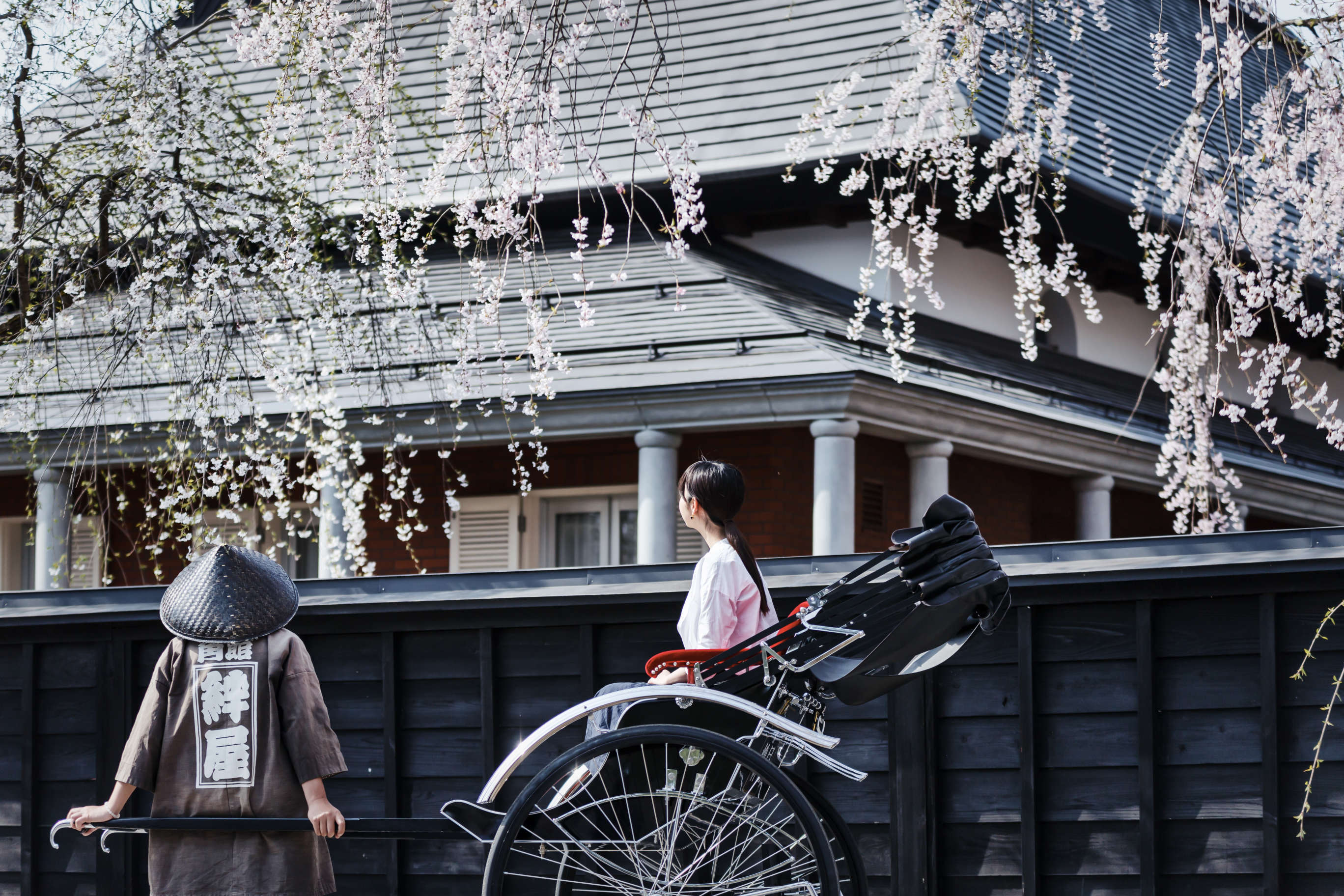
Enjoying the cherry blossoms of Kakunodate from a rickshaw © Akita Prefecture
Once home to around eighty samurai families, Kakunodate samurai district boasts some of the best examples of traditional samurai architecture in the whole of Japan, still intact from the days of these legendary warriors. Visitors can even explore the inside of some of the old samurai houses, as six of them are open to the public - pop along to the Aoyagi House or the Ishiguro House to see for yourself how wealthy samurai families would have lived in a bygone age.
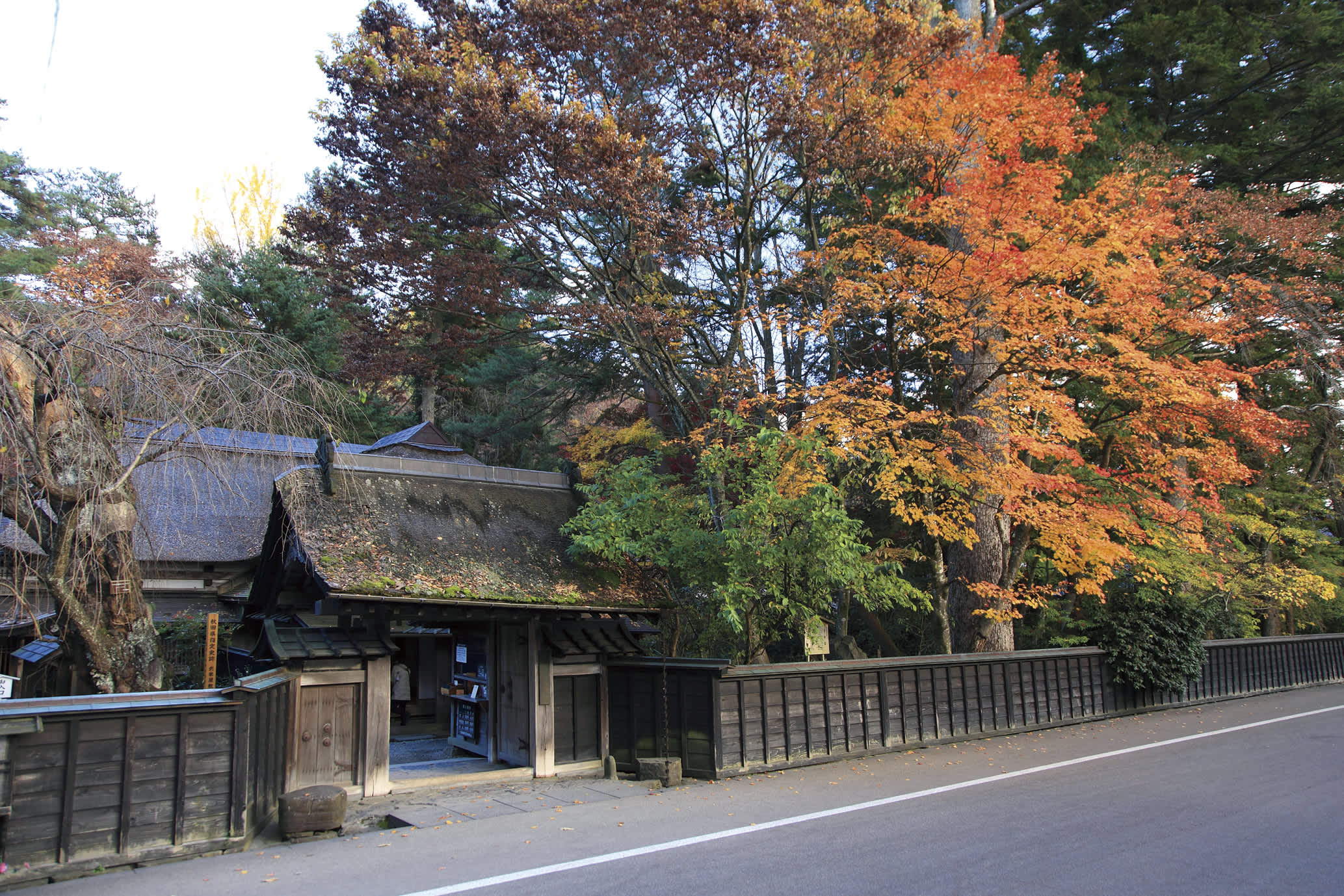
The outside of Aoyagi House in Kakunodate © Akita Prefecture
With multiple buildings to look round, as well as a museum (displays in English), restaurant and gift shop, Aoyagi House is unbeatable (9am - 5pm / until 4:30 pm November-March, 500 yen / around £3.50). While the area open to visitors in the Ishiguro House is much smaller, it is for a very special reason - the original family still lives there! So while the Aoyagi House wins on size, the Ishiguro House might just surpass it for authenticity (9am - 5pm, 400 yen / around £2.80).
The best way to enjoy Kakunodate is like a local - don a rental kimono and save your feet the workout by hopping in one of the town’s many rickshaws for a guided tour round the top sights in both comfort and style.
Bonus - Go Souvenir-hunting in Kakunodate Merchant District
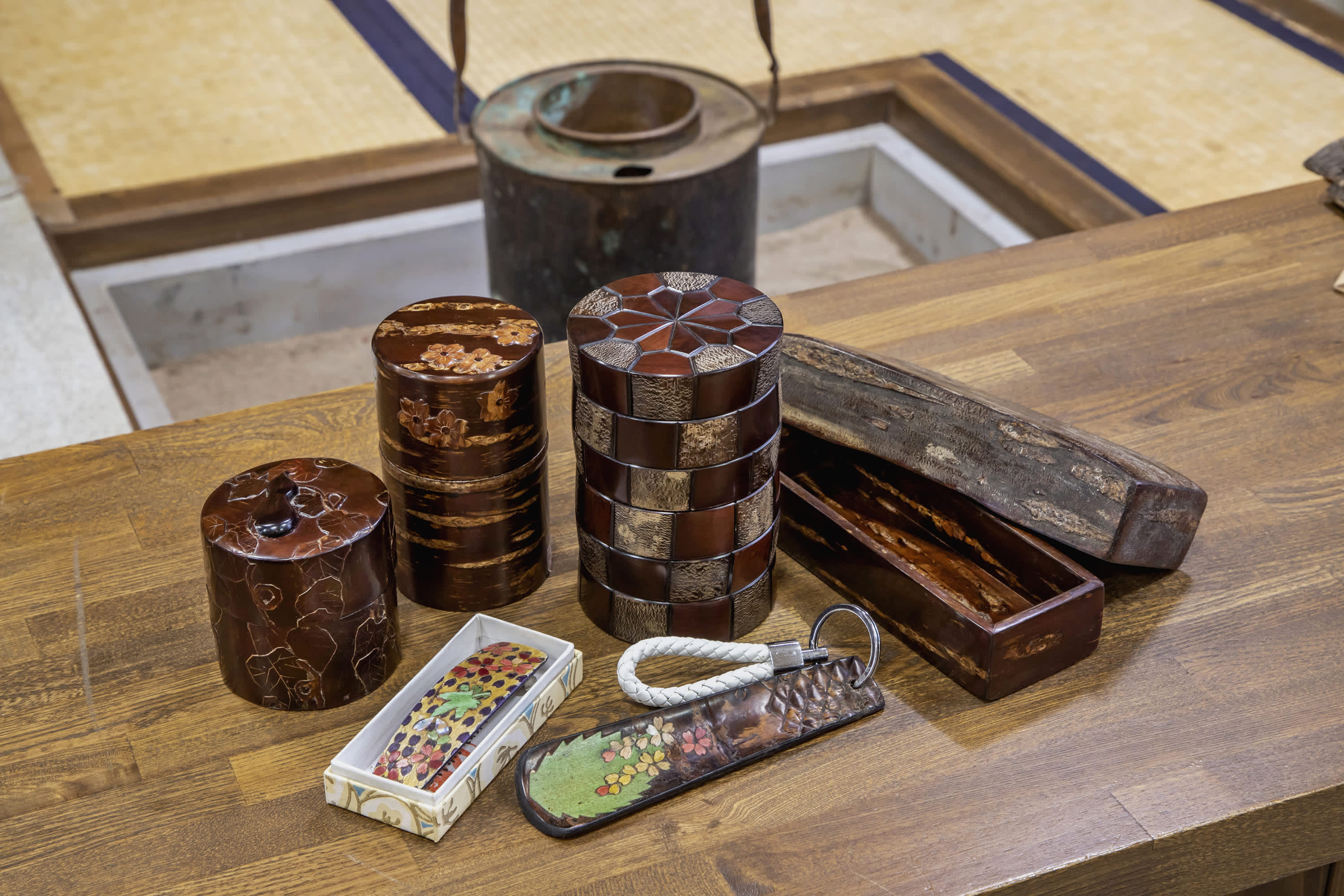
And for those who are not so down with their Japanese flavours, Kakunodate’s merchant district has something else up its sleeve. Pop into one of many shops selling cherry tree bark woodwork products (known as “kaba-zaiku” in Japanese) to pick up one of the beautiful and lovingly made products such as mirrors, jewellery boxes and - for larger budgets/luggage allowances - items of furniture.
4. Enjoy the Cherry Blossoms in Kakunodate
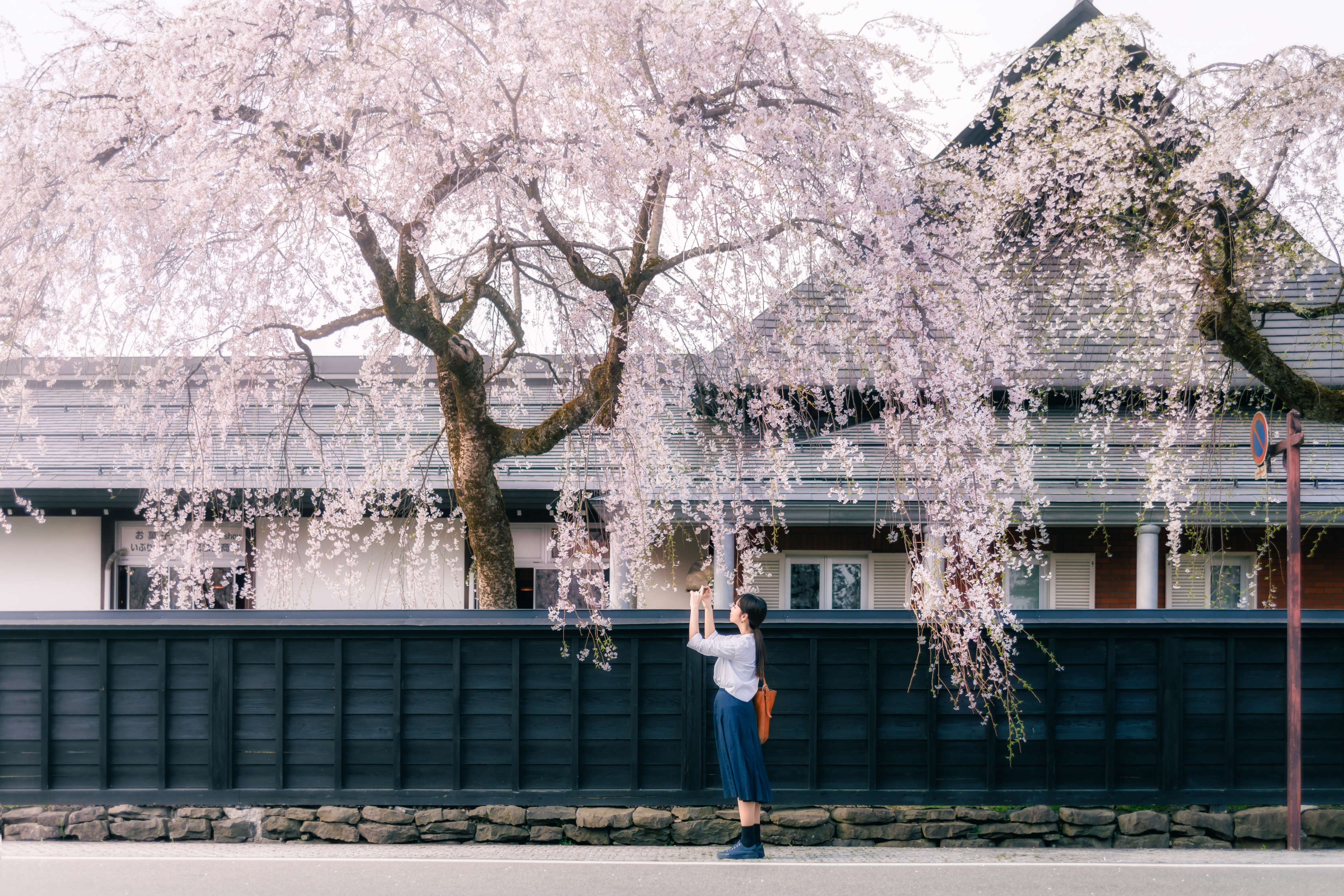
Even in the wild, wintery north of Japan, the cherry blossoms come out to play. In spring, Kakunodate combines two of the most famous aspects of Japan: samurai and cherry blossoms. You can witness Kakunodate’s unique combination of pink blossoms and historic homes for yourself every year from late April to early May.
Come in spring to see the town at its best, when the samurai district’s wide streets and leafy courtyards are taken over by hundreds of flowering weeping cherry blossom trees (shidare-zakura). The trees were originally imported from distant Kyoto, when the competitive spirit of Kakunodate’s local samurai families led them to attempt to outperform each other in cultivating the best cherry trees (Hyacinth Bucket, eat your heart out!).
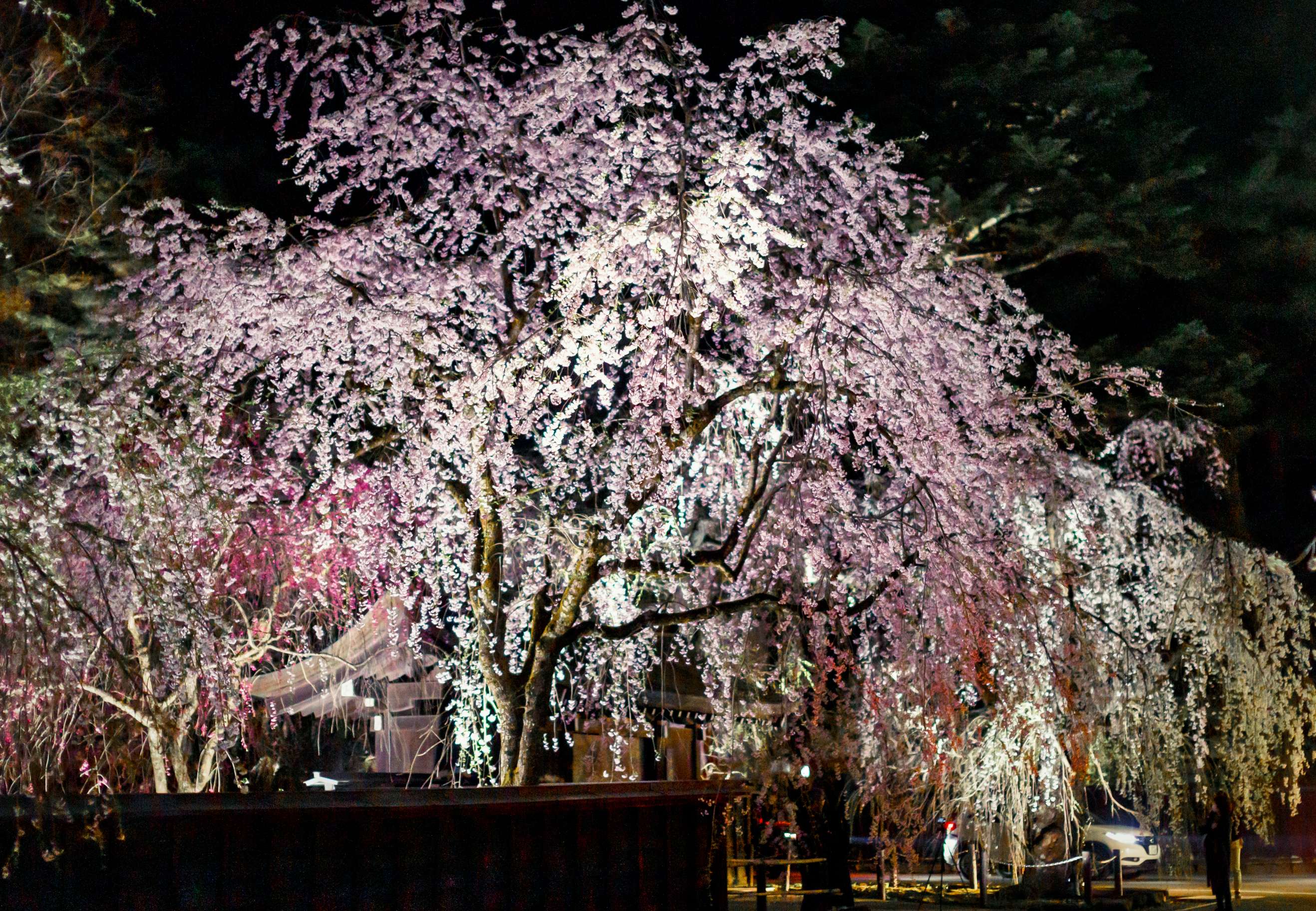
But that’s not all the cherry blossom that Kakunodate has to offer in spring - a long line of Somei Yoshino cherry trees (a non-weeping variety) is planted along the Hinkinai River that runs through the town near the samurai district, making the perfect location for a leisurely stroll along the banks or a relaxing picnic lunch under the branches.
5. Lift Some Weights at Akita Kanto Festival
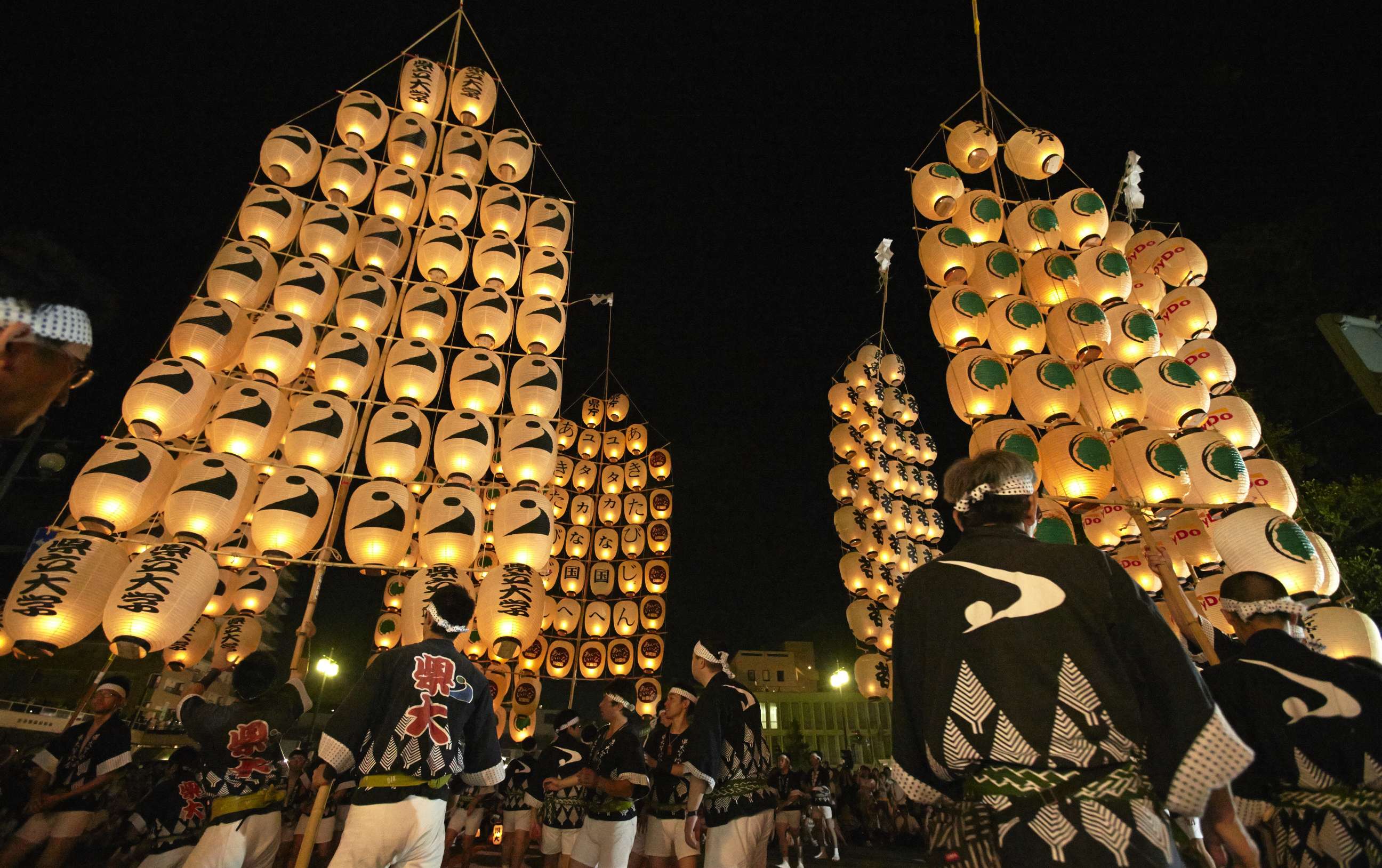
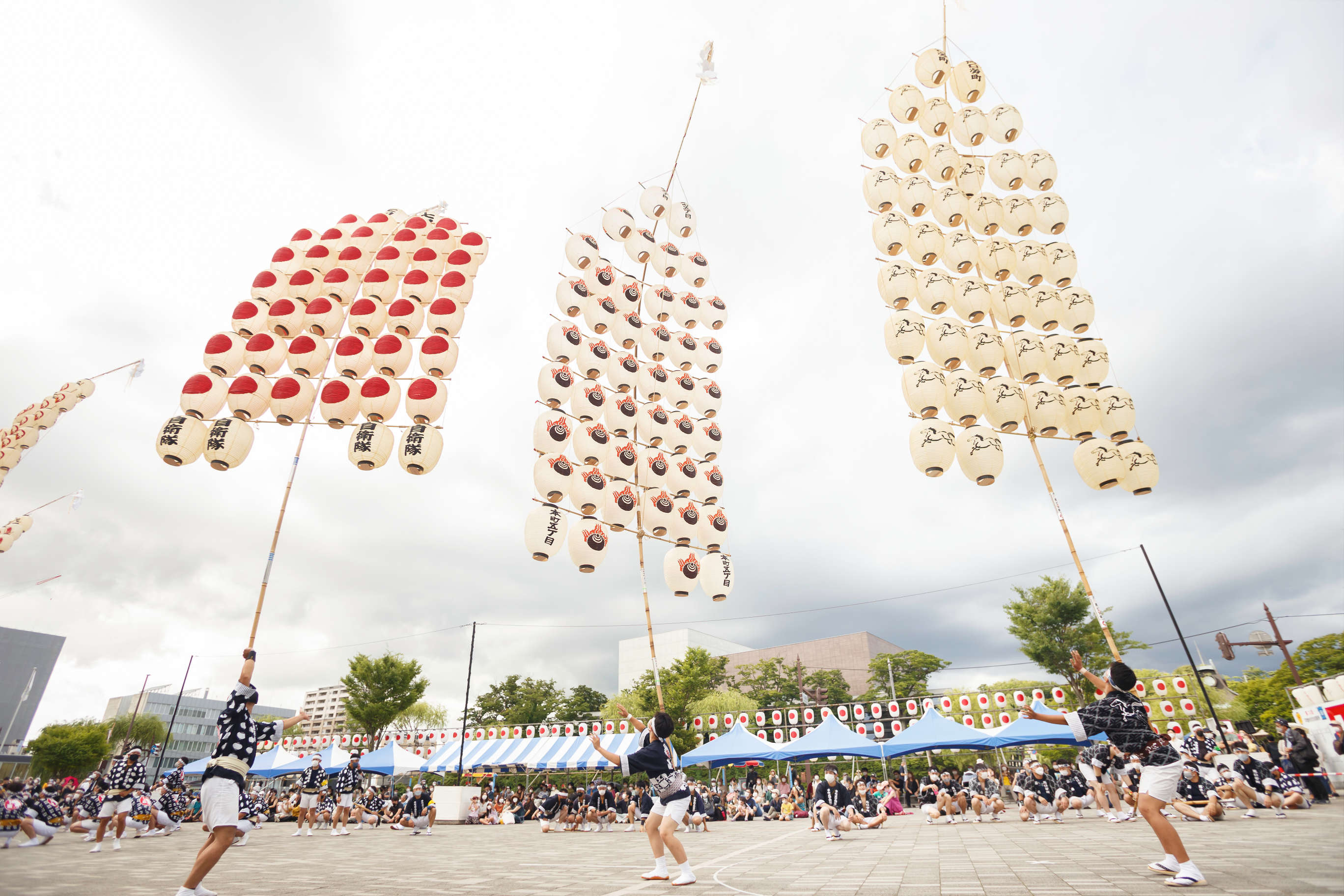

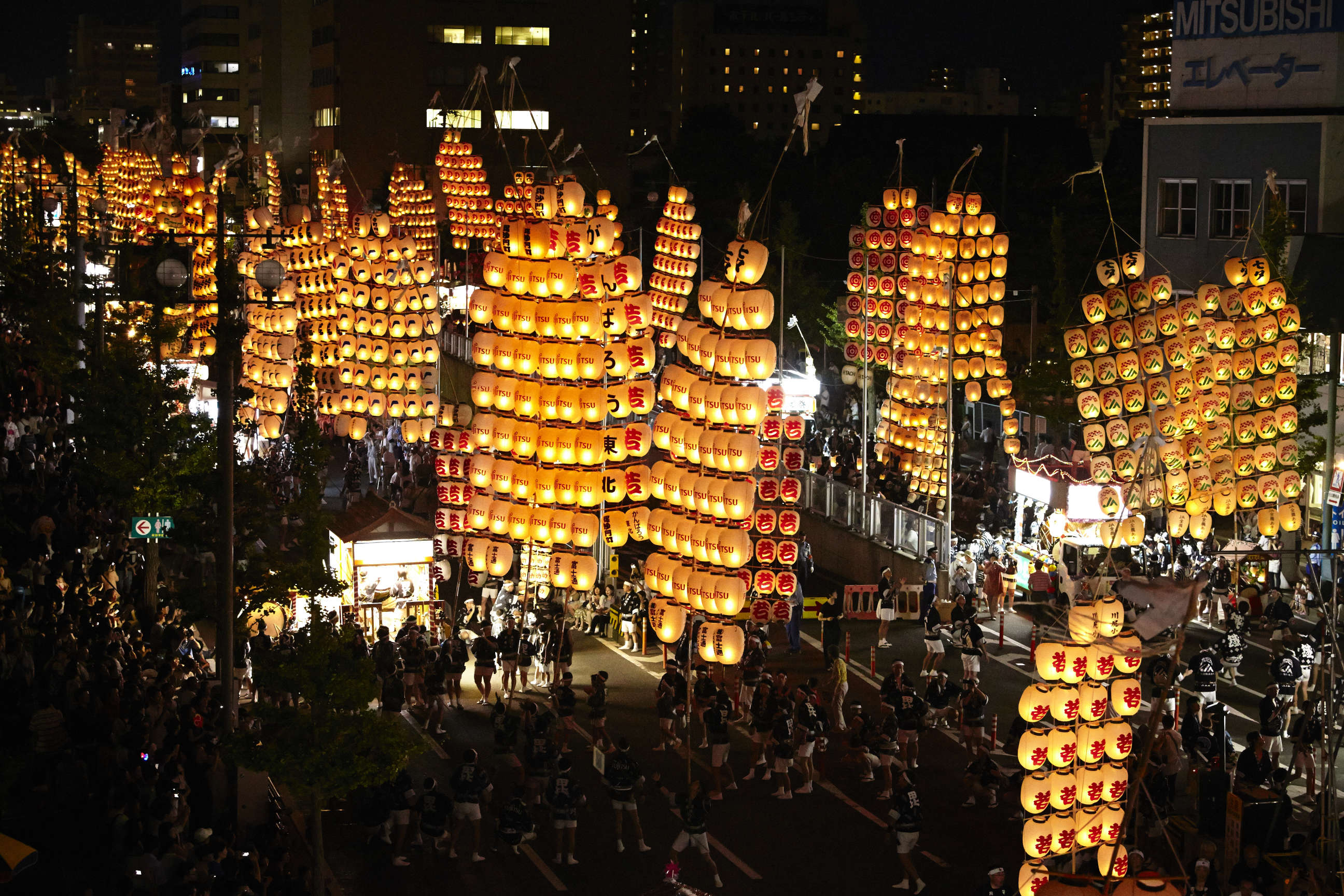
6. Visit Akita Museum of Art

The Akita Museum of Art in Akita City is hands down one of the coolest buildings we’ve seen in any city of Japan. It was designed by Tadao Ando, a world-renowned Japanese architect whose name any architecture fan will instantly recognise. Ten minutes walk west of Akita station, the museum is open 10am - 6pm (last entry 5:30pm) and is an absolute bargain to enter at only 310 yen / around £2!
The museum houses a large collection of works by Tsuguharu Fujita - perhaps better known as Leonard Foujita, arguably Japan’s most famous western-style painter. The Akita museum is one of the few places in the world to exhibit Fujita/Foujita’s works - don’t miss the museum’s focal piece, his 20 metre long mural entitled “Annual Events in Akita” illustrating life in Akita throughout the four seasons.

The museum allows for enjoyment on two levels, satisfying both art and architecture fans - while browsing Fujita’s art works you can also admire the standout features of Ando’s building design, from the free-standing staircase and triangular skylight that greet visitors on arrival to the trademark cement-and-dots design of the walls, which you’ll see replicated in buildings all over Tokyo. The museum also has its very own ‘infinity pond’ on the second floor - altogether a highly Instagrammable location for any visitor to Japan.
7. Hang Out in an Igloo at Yokote Kamakura Festival

Boasting a 400 year history, the Yokote Kamakura Festival in Yokote City brings the snowy night alive during the chilly winter months each year on 15th-16th February, when the town is overtaken by a host of ‘kamakura’, or snow igloos. The festival sees the town populated by clusters of igloos - both life-size igloos big enough for people to enter, and hordes of tiny, decorative candle-lit igloos - that pop up overnight like mushrooms for the duration of the festival.
You can find clusters of the full-size igloos just outside Yokote station, in Komyoji Park, in Minami Elementary School grounds, near Yokote Castle, and the biggest cluster on the western banks of the Yokote River (the opposite side to the station). Meanwhile, carpets of tiny igloos illuminate the banks of the river between the castle and the school, as well as the western side of the Janosaki Bridge, the point of access for the largest cluster of big igloos.
Inside the larger igloos are a snow altar dedicated to the water deity, and a charcoal brazier serving to dual purpose of providing both warmth and grilled rice cakes. In the evenings after night falls, between around 6pm-9pm, local children camp out in their igloos, inviting passersby to join them inside for rice cakes and amazake (very weak, warm rice wine). In return, visitors make an offering to the water deity before leaving. Meanwhile, an enchanting sea of lights springs up from dusk until 9pm each day when the tiny igloos’ candles are lit.
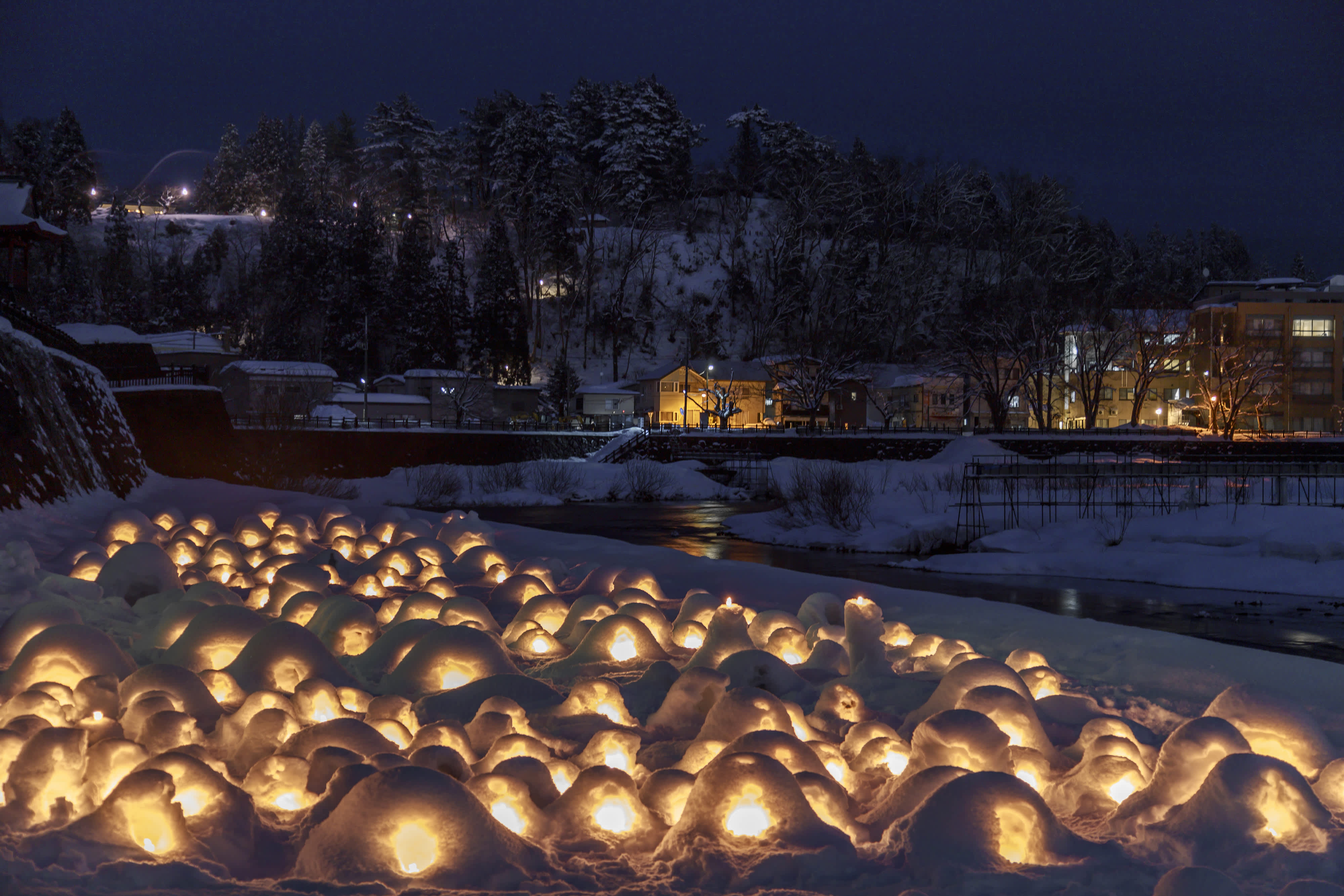
Good walkers can cover all of the sights at the festival on foot. Starting from the station, enjoy a leisurely stroll through the candle-lit streets of the town, appreciating the unique sight of the temporary snow huts alongside the town’s permanent houses. The furthest point of the festival, Yokote Castle, is around 40 minutes walk from the station, but during the festival a loop bus runs between the main festival sights.
On your grand tour, make sure to stop off at Komyoji Park to try your hand at kamakura-making in one of the hands-on sessions. Take the kids along to Minami Elementary School to enjoy playing in the snow and sliding down a snow slide with local children. And soak up the unparalleled views out across the snowy candle-lit city from the observation deck of the uppermost level of Yokote Castle, which opens specially until 10pm during the festival period.
Bringing flickering candle light to the winter darkness, the special scenes in Yokote keep residents and visitors alike feeling warm through the cold months. But if you can’t make it on the dates of the festival itself, don’t worry - the Kamakura-kan Museum preserves a couple of kamakura all year round in -10C conditions, allowing visitors to experience the ambience of Yokote’s unique winter festival all year round. It's open 9am-5pm and admission is a steal at just 100 yen / 60p!.
8. Experience Akita’s Great Outdoors
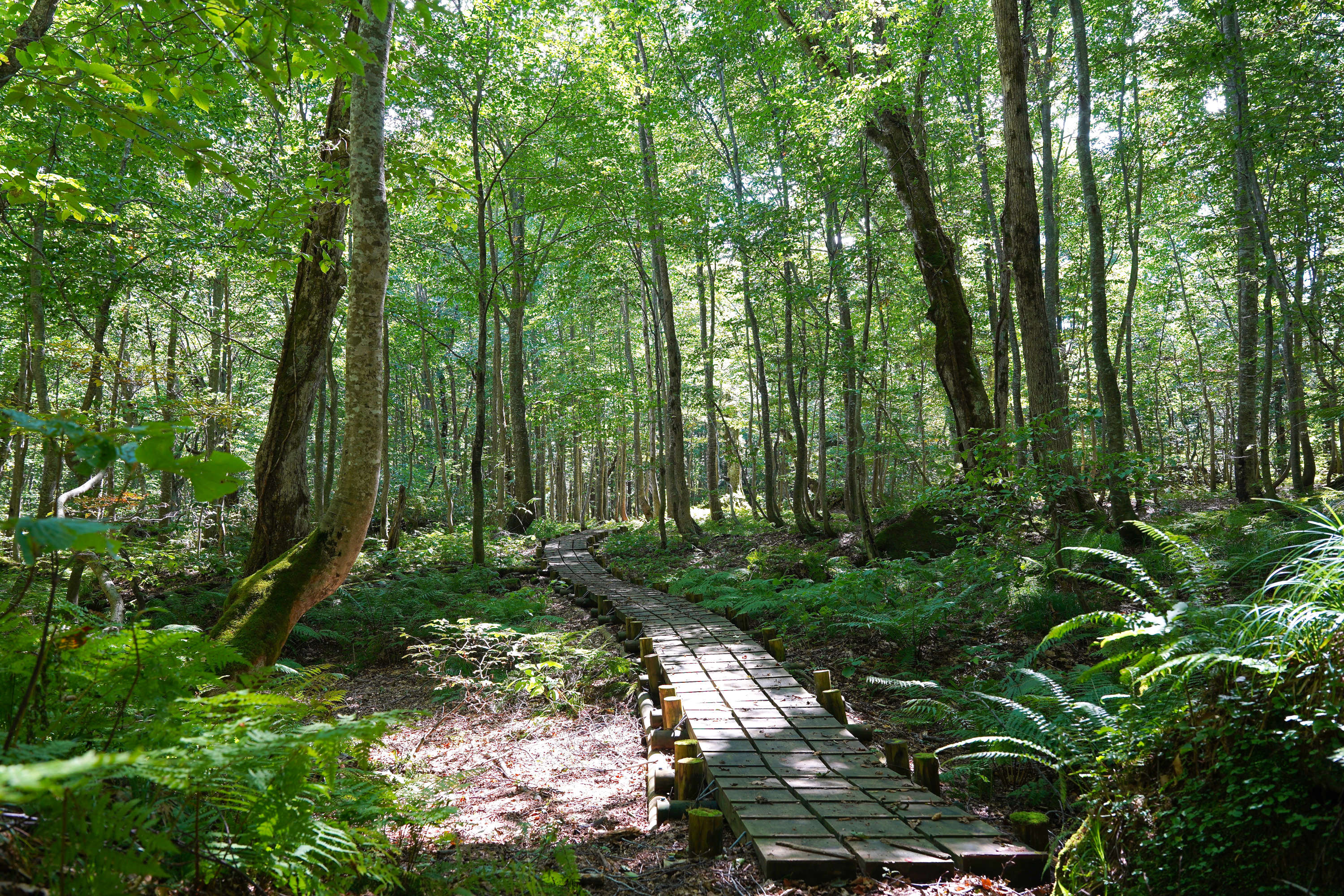
Far removed from Japan’s sprawling cities and urban areas, Tohoku offers some of Japan’s best rustic hot springs and volcanic landscapes, guaranteed to delight outdoors and nature-lovers, and Akita is no exception. The Shirakami Sanchi is a large mountain range straddling the border between Akita and Aomori prefectures whose core zone is home to the last virgin beech forests of Japan, and was declared a UNESCO World Heritage site in 1993.
The region’s top attraction is hiking: the most popular hiking trail leads to the Anmon Falls, a set of three waterfalls between 26 and 42 metres tall. Another option is the Juniko (Twelve Lakes), a series of lakes and ponds connected by scenic hiking trails - don’t miss Aoike (Blue Pond), which has unbelievable naturally blue waters, and Nihon Canyon, Japan’s miniature version of the Grand Canyon. Or, follow the easy trail to Mt Futatsumori - the ascent to the top is steep, but you’ll be rewarded with commanding views over the mountains and valleys of the core UNESCO area (a permit is required to enter the core zone itself).



















































